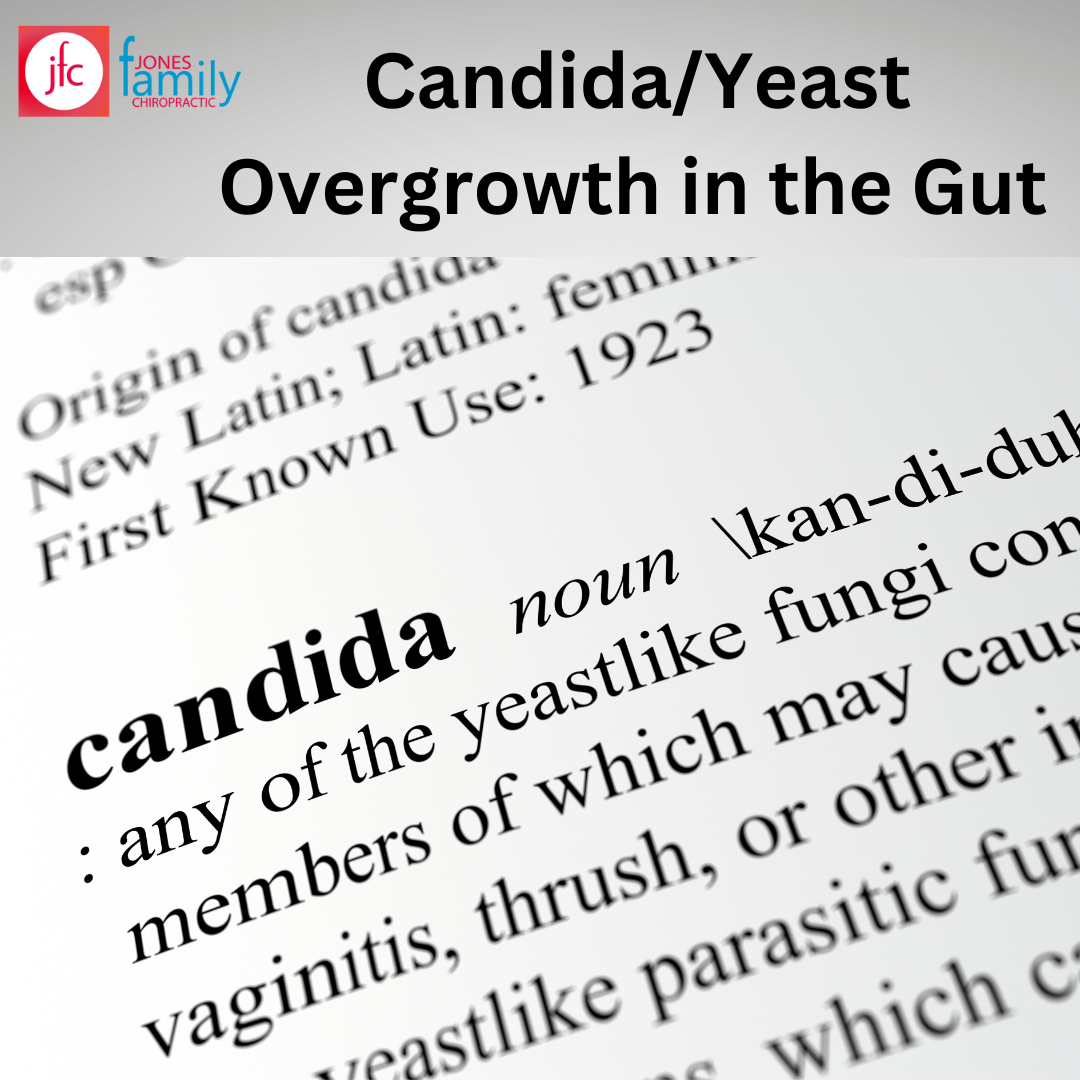Podcast: Play in new window | Download
Candida Overgrowth is one of the hidden stressors you need to know about. So, Jones Family Chiropractic has put together some interesting details for you.
Candida is one fungus known to live naturally on the human body. It is commonly found living on the skin, inside the gut, mouth, and vagina.
In small amounts, Candida yeast is not harmful and cannot cause any diseases to humans. However, the overgrowth of Candida in the gut, caused by certain factors, can result in Candida infection, a condition known as “Candidiasis.”
Let’s get to learn about Candida’s overgrowth in the gut.
What causes Candida overgrowth in the gut?
Candida is a fungus that is harmless under normal conditions. You have certain healthy bacteria in your body that suppress the overgrowth of Candida and keep the amounts harmless.
However, if your immune system is disrupted and the healthy bacteria levels fall, Candida may begin to overgrow in your gut and other susceptible areas of your body.
Here are some factors that can cause Candida overgrowth in the gut:
- Diabetes
- Weak immune system
- High consumption of alcohol
- High levels of refined carbs and sugars in the diet
- Oral contraceptives
- Stress
- Taking too many antibiotics
- Being overweight
- Warm and humid weather
- Heavy smoking
- Pregnancy
- Chemotherapy
Symptoms of Candida overgrowth in the gut
Your gut, which is an internal extension of the outer environment, begins at the mouth and ends in the anus.
When any part of the gut is affected by Candida overgrowth, you may develop certain symptoms which include:
1. Oral thrush
The overgrowth of Candida may affect your mouth and throat, and it may cause soreness on your tongue and mouth. The soreness may spread to your esophagus, causing difficulty in swallowing.
White patches on your inner cheeks, tongue, gums, tonsils, and throat are also associated with oral thrush.
2. Digestive problems
The overgrowth of Candida in your intestines can affect the levels of “good” bacteria that live in your digestive tract.
Low levels of these healthy bacteria can lead to digestive problems which include:
- Diarrhea
- Constipation
- Loss of appetite
- Cramps
- Nausea
- Bloating
3. Fatigue
Fatigue is one of the most common symptoms of Candida overgrowth in the gut. The overgrowth of Candida makes you less active. Your body feels weak even when you’ve not done any rigorous work.
4. Joint pain
Candida overgrowth in the gut may cause the fungi to travel to the joints through the bloodstream, causing severe pains, swelling, and stiffness of the joints.
In some cases, this may result in the inflammation of the joint, a condition known as Candida arthritis.
How to prevent Candida overgrowth in the gut
You may lower your risk of having Candidiasis by certain practices such as:
- Eating a healthy diet
- Abstaining from smoking and alcoholic drinks
- Maintaining your blood sugar levels
- Having a good personal hygiene
- Using antibiotics only when prescribed
In conclusion, always know that certain factors such as weakened immune system, obesity, and diabetes may induce Candida overgrowth in the gut and cause digestive problems.
The digestive problems are usually associated with constipation, diarrhea, and oral thrush which are symptoms of Candida overgrowth in the gut.
You may consult Dr. Jason Jones at our Chiropractic office to learn about the best natural ways to prevent candida overgrowth and to maintain a holistic approach to overall wellbeing.




